Introduction
Pruning is an important part of any landscape maintenance program, including Southwestern desert landscapes. Pruning plants such as cacti, yuccas, agaves and other succulents is simple, but requires some basic plant knowledge. As with other plants in the landscape, poor and incorrect pruning will often lead to more serious problems, including premature death of the plants.
Why Prune Cacti and Succulents?
To:
- Maintain the desired height and width of the original plant
- Remove armament, such as the ends of leaves (spines) on agaves, yuccas and other succulents for safety purposes
- Remove damage from cold, heat, wind, accidents and vandalism
- Remove unwanted sprouts, such as suckers on agaves and/or yuccas
- Remove fruits from cacti
- Remove faded bloom spikes on yuccas, nolinas, (sotols desert spoons) and agave bloom spikes and plant (when they die)
- Enhance landscape aesthetics
- Make cuttings for propagation
Pruning Cacti and Other Succulents
As with all plants, the amount of pruning required is often dictated by the placement and function of the plant. For a variety of reasons, the requirement to prune cacti and succulents may be greatly reduced by good site planning. When selecting a plant, consider the following:
- What will be the mature height and width of the plant?
- What is the life expectancy of the plant? (Most agaves bloom and die after flowering in five to 10 years.)
- Will the armament on the cacti or succulent be a danger to people and pets?
- Is the plant adapted and suitable for your climate?
When pruning, the natural form of any plant should be maintained, and topping or hedging does just the opposite. Most desert plants such as cacti and succulents have some type of armament to protect them in their native habitat. This can be both a benefit and a hazard in the urban landscape. The armament may deter animals and people from entering areas where they are planted, but this armament may also be a hazard if planted too close to sidewalks, driveways, parking areas or entrances to buildings.
Yuccas, nolinas, hesperaloes, and dasylirions produce tall attractive bloom spikes that should be removed after blooming is completed. If one desires to save the seeds for propagation or food for wildlife, then prune after the seeds are mature and/or dispersed. Agave will die after it blooms. Its spikes should be pruned off and the plants removed after blooming or at the first sign of agave weevils.
Pruning of Cacti
There are many different types of cacti native to the Americas. One of the most familiar is the multi-branching type with flat pads is the genius opuntia (“prickly pear cactus”). Other types grow in a columnar manner, either sending out multiple stems and staying low to the ground, such a hedge hog cacti, or soaring to tree-like heights of 40 feet or more (Saguaro cacti).
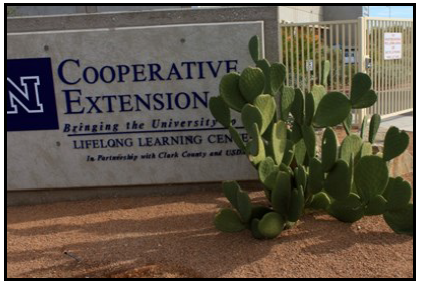
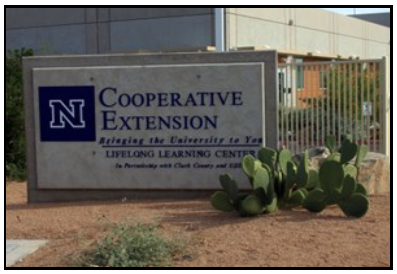
Figure 1 (left) and Figure 2 (right)
The genus Opuntia/Cylindropuntia can easily be pruned to several different heights, depending on the desire of the landscaper. (Figures 1 and 2) show examples of a large Opuntia ficus-indica that had grown too large for the space in which it was planted. This species of Opuntia has the ability to grow into a small tree form, as well as a shrub in colder climates. When pruning this type of cacti, make all cuts at joints where the pads are connected, as shown in (Figure 3).

Figure 3
(Figure 4) shows an example of incorrectly pruned opuntia pads and steams. This plant should never have portions of the pads chopped off. As with any good pruning, it should be difficult for the viewer to locate where the plant had recently been pruned. Smaller columnar cacti (Echinocereus, Cleistocactus, Stenocereus, etc.) can be pruned at ground level to remove stems that are diseased, cold damaged or broken, but never topped (Figure 5). Mid to large columnar cactus should never be topped, as this destroys the natural form of the cacti and may leave cuts open to disease (Figure 6).
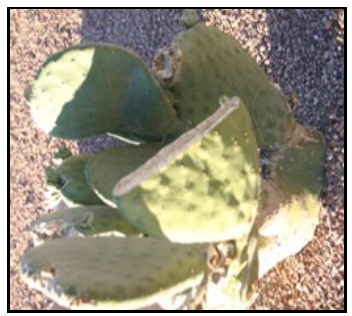
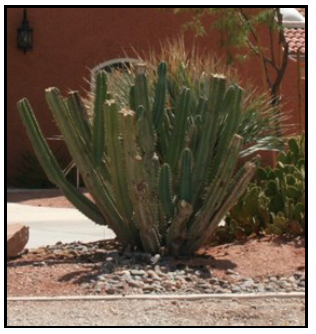
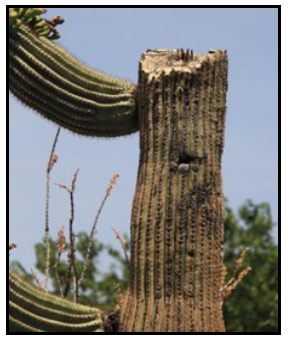
Figure 4 (left), Figure 5 (center), and Figure 6 (right)
Hedging is never recommended for any plant material. However, these Cholla cacti (Figures 7 and 8) have been pruned into a formal hedge. The only advantage is that this makes for an impenetrable barrier around the home, windows and property lines. This may seem like a good idea, but this requires high maintenance, as these cacti are well armored and can cause damage to humans and pets if maintenance is not done correctly.
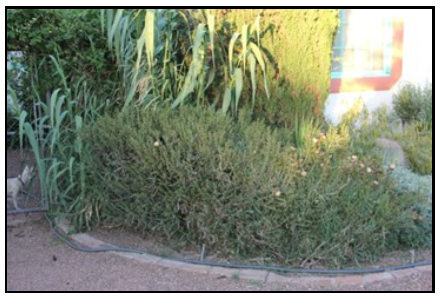
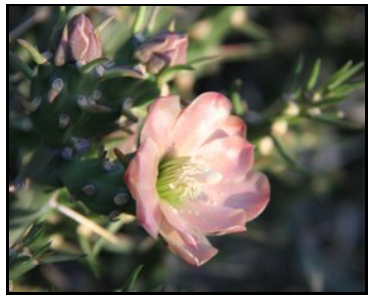
Figure 7 (left) and Figure 8 (right)
Agaves, Yuccas, Dasylirion and Other Desert Plants
Agaves:
Agaves are one of the easiest desert plants to prune. Some are more armored than others. The main armament is a spine at the end of each leaf. These can be quite dangerous to both animals and people, especially to small children and pets. This danger can be taken care of first by planting them away from walkways and other areas frequented by people and pets. Remove the spiny leaf tips by simply pruning off the tip of each leaf as it unfolds, or as needed. Choosing an agave without armament along the leaf and planting in the correct location will eliminate the need for most pruning. (Figure 9) show agaves that have been planted in inappropriate places. (Figure 10) shows a tip removed. These agaves are good candidates for the removal of the tip spine. Pruning the spine may cause a bit of browning on the end that is barely noticeable. Only dead or dying leaves should be removed from agaves (Figure 11). (Figure 12) shows an example of a poorly pruned agave.
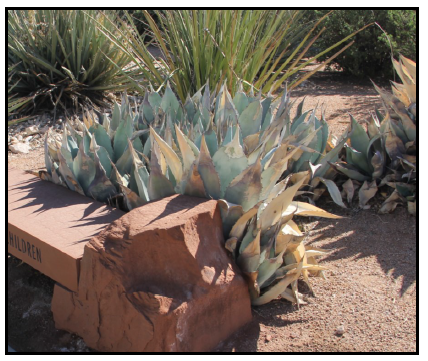
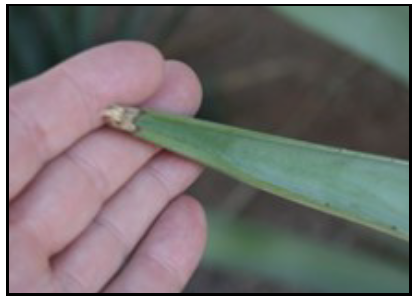
Figure 9 (left) and Figure 10 (right)
The major pruning involved with agaves is their removal after blooming, or when the plant is infested with agave weevils, whereupon, the entire plant must be removed. This includes taking the bloom spike, the mother plant and as much of the underground stem and roots as possible to remove the weevils and their larvae. This will help prevent further infestations in the garden.

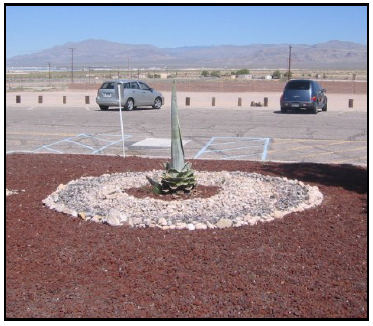
Figure 11 (left) and Figure 12 (right)
Yuccas/Nolinas:
Yuccas and nolinas (bear grass) are pruned in a manner similar to agaves. Remove only damaged leaves. Any armament on the ends of the leaves can also be removed. Anecdotal evidence shows that leaving dead leaves that cover the trunk of tall-growing yuccas and nolinas can protect them from cold in the winter and from water loss from the trunk during dry summer periods. As with all other plants, green leaves on yuccas or nolinas are essential for food production for the plant and to increase their health and growth. (Figure 13) shows incorrectly pruned yuccas. (Figures 14 and 15) show correctly pruned yuccas.
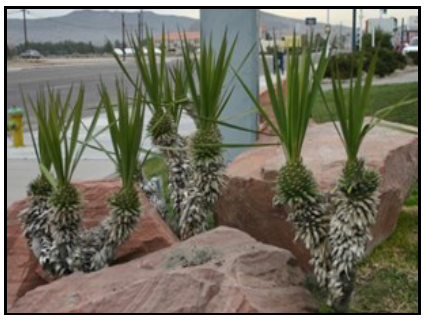
Figure 13
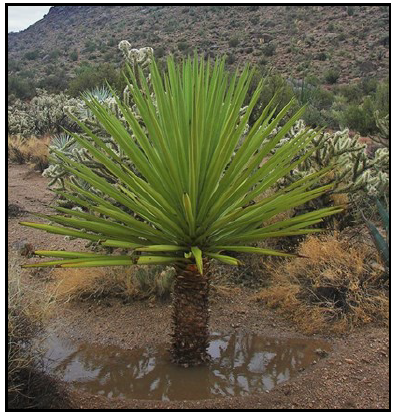
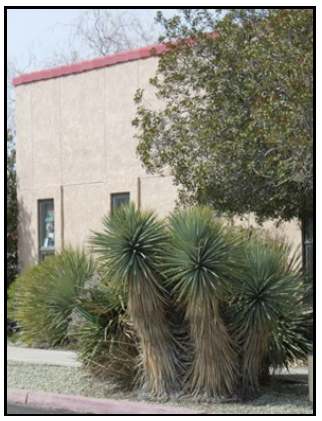
Figure 14 (left) and Figure 15 (right)
Dasylirion:
Dasylirions (desert spoons or sotol) have similar growth patterns as nolinas and yuccas. Green leaves should never be removed. Dead leaves can be removed for aesthetic purposes, as with yuccas, but this is not necessary. Dasylirions should never be skinned (Figure 16), and they should never have all their leaves removed as in (Figure 17). This opens up live growing tissue to insects and diseases. It is extremely destructive to the plant and should never be done. In (Figure 18) are examples of someone cutting off portions of the green leaves to make a sculpted spiral. This type of pruning is unnatural and never recommended.
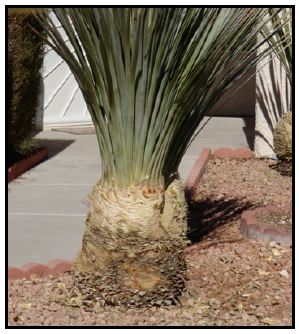
Figure 16
and they should never have all their leaves removed as in (Figure 17). This opens up live growing tissue to insects and diseases. It is extremely destructive to the plant and should never be done. In (Figure 18) are examples of someone cutting off portions of the green leaves to make a sculpted spiral. This type of pruning is unnatural and never recommended.
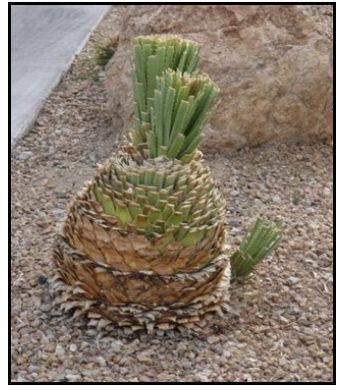
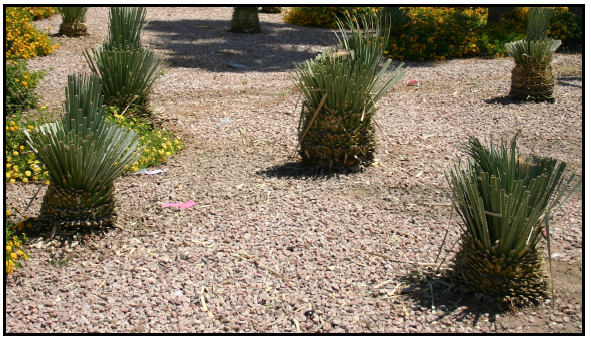
Figure 17 (left) and Figure 18 (right)
Hesperaloes:
Hesperaloes (false yuccas) are not only beautiful, flowering, desert landscape plants, but they are also one of the easiest to maintain (Figure 19). The only pruning needed on these plants is removal of any dead foliage and spent flower stems. They should never be pruned into balls or squares (Figure 20).This removes the forming flower spikes and most of the leaves that provide food for the plant’s growth and blooming. Never remove flower spikes until they have finished blooming.
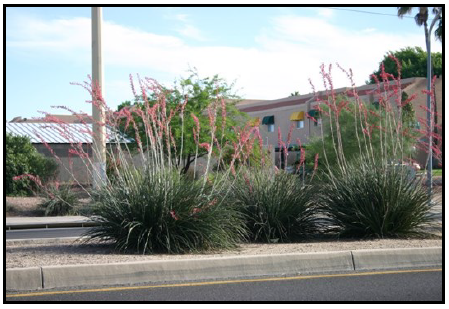
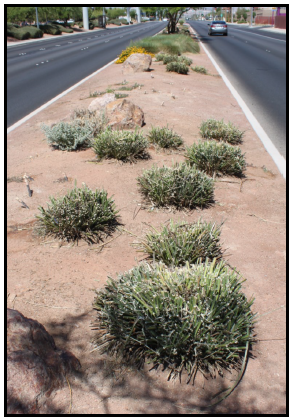
Figure 19 (left) and Figure 20 (right)
One of the main reasons for planting hesperaloes is for their beautiful red, pink or yellow flowers. Too often in the desert Southwest, landscapers simply prune for the sake of pruning, removing flower spikes before the flowers have opened. (Figure 21). This practice not only removes flowers, but also creates more yard waste for the landfill, as does all over pruning.
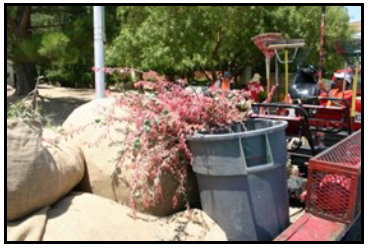
Figure 21
Ocotillos:
Ocotillos are multi-stemmed desert plants (Figure 22). Individual stems that have become too tall or have died should be pruned to the ground as needed. Otherwise, the remaining stems should be allowed to grow and produce flowers, which appear on the ends of the stems. Ocotillos should never be topped as pictured in (Figure 23 and 24). This will cause aberrant stem growth and floral removal, and will stunt the height and form of the plant. As with most of the desert plants discussed in this publication, ocotillos require little pruning. The occasional excessively tall, damaged or dead stems are all that need to be removed from an ocotillo when considering pruning.
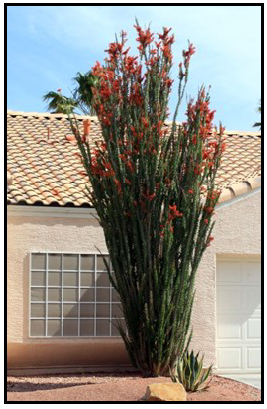
Figure 22
The plants discussed in this publication and other similar desert plants that grow in the desert Southwest require minimal pruning. The main reasons to prune cacti and succulents are to remove dead or dying leaves, to remove armament that may cause damage to people and pets, to remove old flowering structures, and to remove diseased and damaged parts of the plant. When in doubt, keep pruning to a minimum and check with your local Cooperative Extension office for further information.

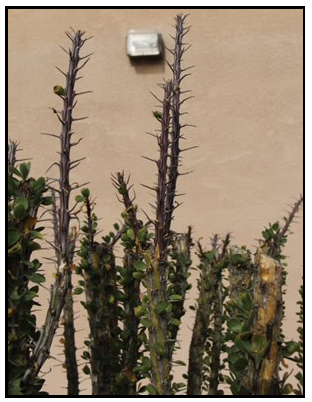
Figure 23 (left) and Figure 24 (right)
REFERENCES
Anderson, Edward F., Barthlott, Wilhelm, Brown Roger. The Cactus Family. 2001. Timber Press Inc.
Brenzel Norris, Kathleen, Editor. The New Sunset Western Garden Book, The Ultimate Gardening Guide. 2012, Time Home Entertainment Inc., Menlo Park, California.
Irish, Gary & Mary. Agaves Yuccas and Related Plants, A Gardener’s Guide. Timber Press Inc., May 10, 2000.
Kelly, Jack. How to Propagate Agaves and Cacti from Cuttings and Seed. January, 2009. Arizona Cooperative Extension. Publication AZ1483. The University of Arizona College of Agriculture and Life Sciences
Mielke, Judy. Native Plants for Southwestern Landscapes. 1993. University of Texas Press Austin.
Starr, Greg. Agaves Living Sculptures for Landscapes and Container. Timber Press Inc., 2012.
Starr, Greg. Cool Plants for Hot Gardens. 2009. Rio Nuevo Publishers, Tucson, Arizona.
Robinson, M. L., O’Callaghan, A., and Anderson, J.
2016,
Pruning Cacti And Other Desert Succulents,
Extension | University of Nevada, Reno, SP-16-01


